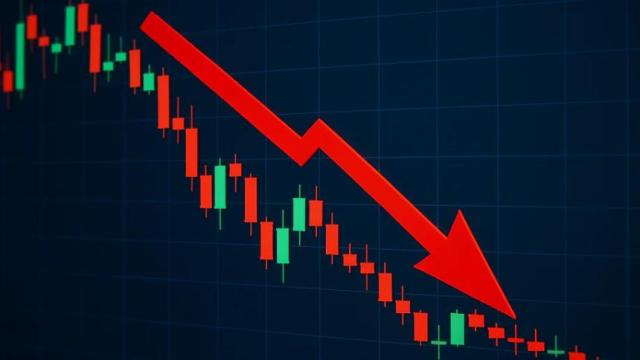
ETH is down 6.7% in 24 hours, but held up better than many altcoins as the market shock from US President Donald Trump's tariff announcement sent prices plummeting, hitting the 200-day EMA and bouncing back.
The deep decline wiped out leveraged positions, liquidating 1.6 million traders. Technical and on-chain signals are mixed: RSI approaches oversold territory, while record floor deposits and Staking withdrawals could create short-term selling pressure.
- ETH Dip around $3,510 and recovered above $3,800, hitting 200-day EMA; RSI at 35 suggests a possible reversal.
- Massive liquidation event, 1.6 million traders wiped out and $20 billion in market losses in 24 hours, stemming from the tariff announcement.
- Fundstrat predicts ETH could head towards $5,550, but exchange inflows reaching 79 (2025 high) and $10 billion Staking withdrawals could hold the price down.
What happened to ETH price after the market shock?
ETH fell about 6.7% in 24 hours, falling sharply on Friday to around $3,510 before recovering above $3,800, showing better resilience than many altcoins. The price touched the 200-day EMA before recovering, while the RSI at 35 signals a near-oversold condition.
Touching the 200-day EMA often acts as dynamic support, especially in a medium-term uptrend. RSI approaching the 30 zone can trigger Dip fishing buying. However, after extreme volatility, the market often needs time to rebalance liquidation before forming a new trend. Data source: TradingView.
What triggered the sharp decline?
The fall was triggered by the tariff announcement from US President Donald Trump, which raised concerns of a prolonged trade war between the United States and China, weighing on risk sentiment.
In a high-beta asset environment, policy shocks and macro uncertainty often trigger a chain reaction: leveraged liquidations, increased volatility, and liquidation contraction. This explains why both quality assets and altcoins are sold off, with the severity varying depending on liquidation and position structure.
What impact did the biggest liquidation event in history have?
Nearly 1.6 million traders were liquidated, and the market was blown away by $20 billion in 24 hours, marking the most severe liquidation event in cryptocurrency history, shaking investor confidence.
As the liquidation chain spread, the price drop triggered more stop-loss orders and margin calls, creating a spiral of forced selling. Liquidation data from Coinglass showed high systemic leverage, leaving the market vulnerable to sudden shocks.
Is ETH More Durable Than Long-Tailed Altcoins?
Yes. ETH showed better price durability than most altcoins, while many long-tail coins fell 70% to over 95% in the chaotic session.
This observation is consistent with the relative safe haven mechanism: when risk increases, money flows tend to favor large-cap, liquidation Capital like BTC and ETH. That does not eliminate volatility, but limits extreme falls compared to small - cap altcoins.
“BTC and ETH performed relatively well compared to the long-tail alts, which were down 70% or more, some by over 95%. I don't usually believe in conspiracy theories, but this is clearly not normal market behavior.”
– Sassal, crypto investor, 2025, source: X (Twitter) https://x.com/sassal0x/status/1976784751332934054
Can ETH Hit $5,550 or Will Selling Pressure Hold Down?
According to Fundstrat, ETH could make a new high around $5,550 after bottoming Dip in Friday's crash. However, short-term on-chain signals suggest that selling pressure could emerge.
The Medium exchange inflow hit 79 on Saturday, a 2025 high according to CryptoQuant, which typically suggests increased selling intent. At the same time, the Ethereum Staking withdrawal queue hit a record $10 billion in October, Nansen Chia Cointelegraph, which could create a flexible supply, though not necessarily a sell-off.
How far is ETH from its all-time high?
ETH is more than 22% below its all-time high of $4,957 set in August, according to TradingView.
This gap suggests there is significant room for recovery if macro conditions and cash flows improve. However, to retest the top, ETH needs to absorb short-term supply from exchange inflows and Staking withdrawals, while remaining above key technical levels.
What technical levels to watch next?
200-day EMA is key dynamic support as price has touched and bounced. RSI around 35 signals local oversold risk is decreasing.
Holding the recovery zone above $3,800 would bolster the confidence of buyers. If the RSI continues to turn up, a bullish divergence could emerge. Conversely, losing the 200-day EMA would reopen the risk of testing Friday’s Dip , requiring careful risk management.
What do on-chain signals: exchange inflow and Staking withdrawal say?
Exchange inflow mean reached 79, the 2025 high, which usually means potential selling pressure increases as more coins are moved onto exchanges ready for trading.
The $10 billion Staking shows that some validators want to be more flexible with Capital. Nansen noted that this does not mean immediate selling, but in the short term it can create supply. As inflows decrease, the signal of long-term holding improves, creating the foundation for a more sustainable uptrend.
Key upside and downside risks: a quick comparison
The table below summarizes key signals and potential implications, helping to balance the bullish thesis and near-term risks.
| Element | Evidence/Data | Potential Impact | Source |
|---|---|---|---|
| Technical support | Price touched 200-day EMA and bounced back | Strengthening technical momentum | TradingView |
| Impulse | RSI ~35, near oversold zone | Short-term reversal potential | TradingView |
| Selling pressure | Exchange inflow mean = 79, highest 2025 | Increased risk of profit taking/dump selling | CryptoQuant |
| Staking liquidation | Staking Staking hit $10 billion in October | Flexible supply, not sure of immediate sale | Nansen told Cointelegraph |
| Expected | Forecast direction 5,550 USD | Potential for new highs if risk declines | Fundstrat |
| System leverage | 1.6 million traders were liquidated | Volatility remains high in the short term | Coinglass |
Frequently Asked Questions
What price points did ETH just hit in the crash?
ETH fell to around $3,510 before bouncing above $3,800 on Friday, according to TradingView, a strong test of the 200-day EMA before recovering.
Why do many altcoins fall deeper than ETH?
Altcoins with thin liquidation and high leverage are prone to chain sell-offs. During large fluctuations, money flows favor large Capital assets like ETH, making the decline relatively milder.
What does RSI at 35 mean?
RSI around 35 shows that momentum is weakening and approaching oversold territory, which is usually accompanied by a higher probability of a technical recovery, but does not guarantee a sure reversal.
What does an exchange inflow mean of 79 indicate?
A reading of 79, the 2025 high according to CryptoQuant, implies more ETH is being transferred to exchanges, which could increase short-term selling pressure. When this indicator falls, selling pressure usually decreases.
Will withdrawing $10 billion in Staking cause the price to drop?
Increased Staking withdrawals create more flexible supply, but according to Nansen, it does not mean immediate selling. The actual impact depends on validator decisions and market context.








